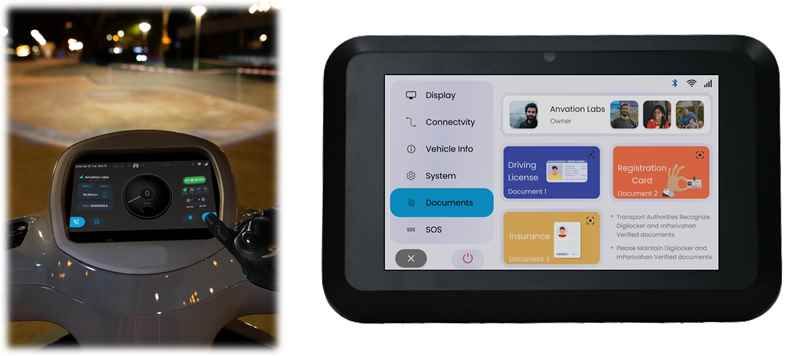Advantages of Android based touch enabled HMI over MCU based digital instrument cluster
As technology continues to advance, the automotive industry is keeping pace by introducing new innovations that improve the overall driving experience. We see a shift towards modern and smart solutions that provide better user experience and connectivity. One of the most exciting new developments is the use of Android HMI systems in modern vehicles. The conventional digital instrument cluster built over MCU with RTOS is being replaced by more advanced technology such as Android HMI built over Android SOM. Compared to conventional digital instrument clusters, Android HMI systems offer numerous advantages that significantly enhance the driving experience.
3D Immersive Graphics
Android HMI systems can deliver 3D immersive graphics, which create a more engaging and realistic display for drivers. With advanced graphics processors and support for OpenGL, Android HMI systems are capable of rendering highly-detailed visuals that can bring driving data to life. For example, an Android HMI can display a 3D model of the car, allowing the driver to see a detailed view of the vehicle and its surroundings. This not only makes the instrument cluster more aesthetically pleasing, but it also provides drivers with a more intuitive and immersive way to interact with their vehicle. This is not possible on a MCU based digital cluster.

Edge Analytics
An Android HMI comes with powerful processing capabilities that allow edge analytics. This means that the HMI can perform advanced data processing on the device itself, rather than sending it to the cloud for processing. This allows for faster and more accurate data analysis, which is critical for autonomous driving and other advanced features. By integrating sensors and machine learning algorithms into the HMI, Android HMI systems can analyze data in real-time and provide valuable insights to drivers. This can include everything from predictive maintenance alerts to real-time fuel economy analysis, giving drivers the tools they need to make informed decisions about their vehicle. A conventional digital instrument cluster built over MCU with RTOS does not have such capabilities.

Responsive UI
Responsive UI is another advantage of Android HMI systems. With powerful CPU and GPU, Android HMI systems can provide faster and smoother touch response, enabling more efficient and intuitive operation of the instrument cluster. This, in turn, makes it easier for drivers to navigate through menus and find the information they need quickly. The UI is designed to be user-friendly, intuitive, and easy to navigate, with touch screen functionality. This ensures that the driver can interact with the device quickly and efficiently, without getting distracted from driving. A conventional digital instrument cluster built over MCU with RTOS does not offer such a responsive UI.

High-End Car Like UI/UX
Additionally, Android HMI systems offer a high-end car-like UI/UX. With support for rich media such as images and videos, Android HMI systems can deliver a modern, engaging interface that is more intuitive and user-friendly than traditional digital instrument clusters. This helps to create a more enjoyable and immersive driving experience, similar to what is found in high-end luxury vehicles.

Thermal Ruggedization
While the benefits of Android HMI systems are clear, there is also an important consideration when it comes to thermal ruggedization. As Android HMI systems are being introduced in 2-3 wheeler vehicles, golf carts, and other open vehicles, the ability to withstand high temperatures and harsh environmental conditions becomes critical. Android HMI devices also generate more heat than conventional digital instrument clusters built over MCU with RTOS due to their high processing power. Therefore, proper thermal ruggedization is essential to prevent damage to the device and ensure its longevity. Manufacturers need to ensure that Android HMI systems are designed to withstand the rigors of everyday use and are ruggedized to operate reliably in harsh conditions.
Ridot-K, our hardened, connected and smart Android HMI is an embodiment of these advantages and our customers are convinced that this is the future.

In conclusion, the use of Android HMI systems in the automotive industry is a significant development that is transforming the way we interact with our vehicles. With their ability to deliver 3D immersive graphics, perform edge analytics, provide a responsive UI, and offer a high-end car-like UI/UX, Android HMI systems are revolutionizing the instrument cluster and creating a more engaging and enjoyable driving experience. With the growing popularity of 2-wheeler vehicles, golf carts, and heavy vehicles, the need for connected & smart Android HMI systems is only going to increase in the coming years.
© 2023 Anvation Labs. All rights reserved.
 .
.